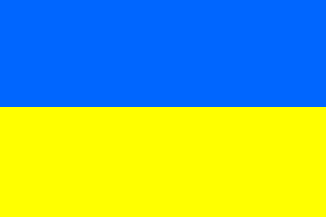 image by Shipmate Flagchart : http://www.flagchart.net
image by Shipmate Flagchart : http://www.flagchart.net
adopted 28 Apr 1959

Last modified: 2009-08-08 by jarig bakker
Keywords: valkenswaard |
Links: FOTW homepage |
search |
disclaimer and copyright |
write us |
mirrors
 image by Shipmate Flagchart : http://www.flagchart.net
image by Shipmate Flagchart : http://www.flagchart.net
adopted 28 Apr 1959
In Valkenswaard pre-Roman pottery has been found in large quantities.
In the beginning of the 8th century Willibrord preached the Evangelium
here. He converted a noble Frankish family, of which two children went
to the monastery. The grateful father gave in 704 all land between the
Tongelreep and the Dommel to Willibrord, who presented it to the Benedictine
Abbey in Echternach (Luxemburg). Until 1800 this abbey was to be consulted
when land was sold.
Valkenswaard was named at first "Weedert" (diked piece of land),
later "Weert op den Dries" (dries = low land), to distinguish it
from Weert in Limburg. Next: "Verkensweert"
(pig-weert), because of important pig-markets held here; it finally became
Valkenswaard because of falconry (valk = falcon). Unfortunately
the last falconer died in 1935.
Valkenswaard was part of the quarter Kempenland of the Meierij van
Den Bosch; it became a possession of the States General in 1648. Till 1864
it was an agricultural municipality - then a cigar-factory was founded,
followed by a railway, a beerbrewery (Dommelsch), diamonds, leather, car-parts,
textiles, washing, metal hardware, glue, transformators and
carpentry ("You name it: we got it"!)
Source: Prisma-toeristengids Zeeland-Brabant-Limburg, by P.G. Bins,
1965.
Nicknames:
"Kalen" - baldies: apparently people working in cigar-factories
were above average bald
"Valken" and "Haviken" (hawks) - after the placename,
and the old falconers.
Source: Groot Schimpnamenboek van Nederland, by Dirk van der Heide,
1998.
Jarig Bakker, 29 May 2005
![[Valkenswaard old flag]](../images/n/nl-nb0vw.gif) image by Jarig Bakker, 29 May 2005
image by Jarig Bakker, 29 May 2005
According to "Wie, Wat, Waar? 1940", an annual published by the
Rotterdamsch Nieuwsblad in Nov. 1939, the flag of Oosterhout was: square
chequy of red and white; in the canton a blue square, charged with the
municipal arms, in which azure is replaced by gules.
This is a parading flag, used in 1935 at the 750th birthday of 's-Hertogenbosch.
Jarig Bakker, 29 May 2005
![[Valkenswaard CoA]](../images/n/nl-nb)vw.gif) image by Jarig Bakker, 29 May 2005
image by Jarig Bakker, 29 May 2005
Arms: azure St. Nicholas holding in his right hand a crozier, while
the left hand is extended over three children standing on the rim of a
tub, all placed on a soil, all or.
This refers to a miracle: a landlord had killed and pickled three children,
but Sinterklaas resurrected them.
Jarig Bakker, 29 May 2005